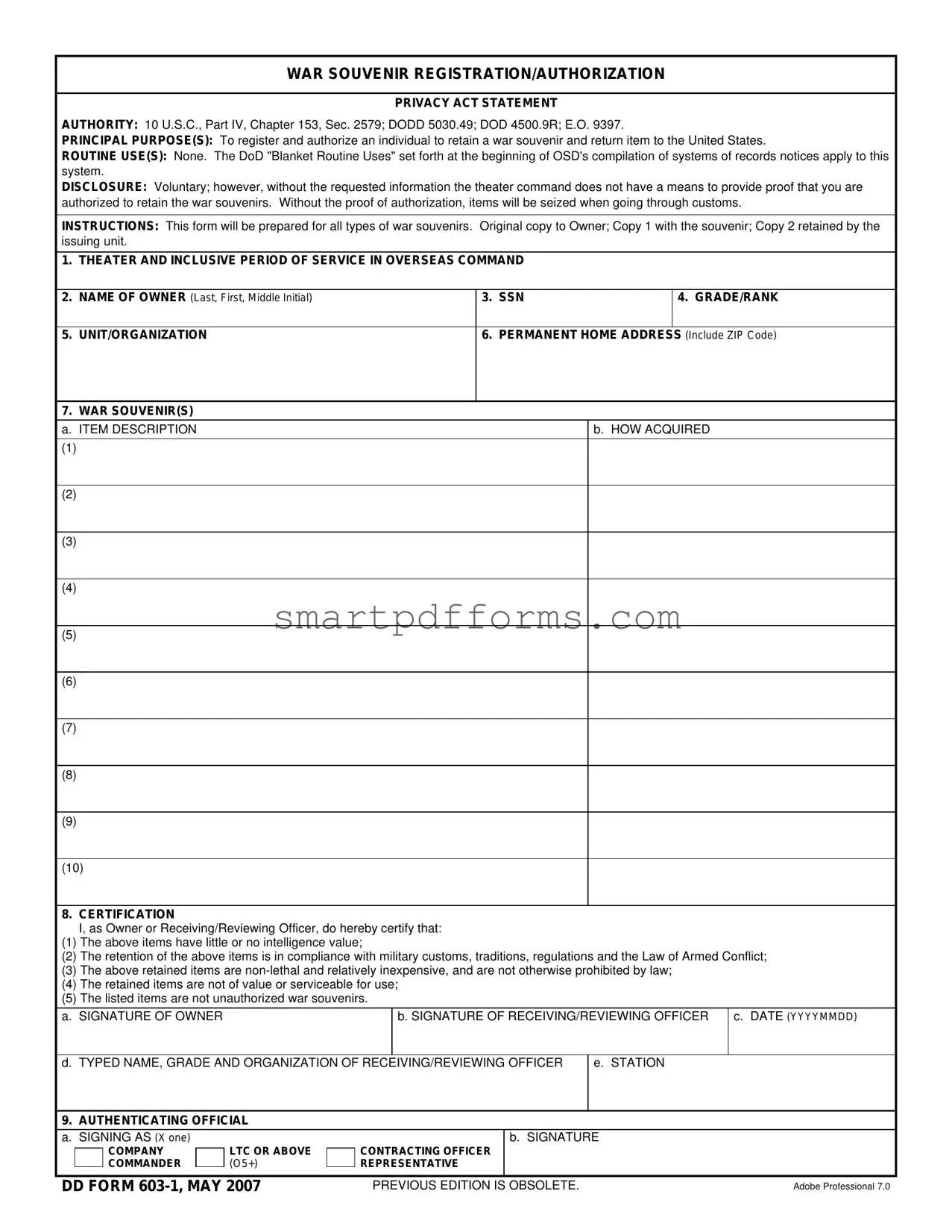
WAR SOUVENIR REGISTRATION/AUTHORIZATION
PRIVACY ACT STATEMENT
AUTHORITY: 10 U.S.C., Part IV, Chapter 153, Sec. 2579; DODD 5030.49; DOD 4500.9R; E.O. 9397.
PRINCIPAL PURPOSE(S): To register and authorize an individual to retain a war souvenir and return item to the United States.
ROUTINE USE(S): None. The DoD "Blanket Routine Uses" set forth at the beginning of OSD's compilation of systems of records notices apply to this system.
DISCLOSURE: Voluntary; however, without the requested information the theater command does not have a means to provide proof that you are authorized to retain the war souvenirs. Without the proof of authorization, items will be seized when going through customs.
INSTRUCTIONS: This form will be prepared for all types of war souvenirs. Original copy to Owner; Copy 1 with the souvenir; Copy 2 retained by the issuing unit.
1. |
THEATER AND INCLUSIVE PERIOD OF SERVICE IN OVERSEAS COMMAND |
|
|
|
|
|
|
2. |
NAME OF OWNER (Last, First, Middle Initial) |
3. |
SSN |
4. GRADE/RANK |
|
|
|
|
|
5. |
UNIT/ORGANIZATION |
6. |
PERMANENT HOME ADDRESS (Include ZIP Code) |
|
|
|
|
|
7. WAR SOUVENIR(S)
a.ITEM DESCRIPTION
(1)
(2)
(3)
(4)
(5)
(6)
(7)
(8)
(9)
(10)
8.CERTIFICATION
I, as Owner or Receiving/Reviewing Officer, do hereby certify that:
(1)The above items have little or no intelligence value;
(2)The retention of the above items is in compliance with military customs, traditions, regulations and the Law of Armed Conflict;
(3)The above retained items are non-lethal and relatively inexpensive, and are not otherwise prohibited by law;
(4)The retained items are not of value or serviceable for use;
(5)The listed items are not unauthorized war souvenirs.
b. SIGNATURE OF RECEIVING/REVIEWING OFFICER
d. TYPED NAME, GRADE AND ORGANIZATION OF RECEIVING/REVIEWING OFFICER
9. AUTHENTICATING OFFICIAL
a.SIGNING AS (X one)
COMPANY COMMANDER
CONTRACTING OFFICER REPRESENTATIVE
DD FORM 603-1, MAY 2007 |
PREVIOUS EDITION IS OBSOLETE. |
Adobe Professional 7.0 |

